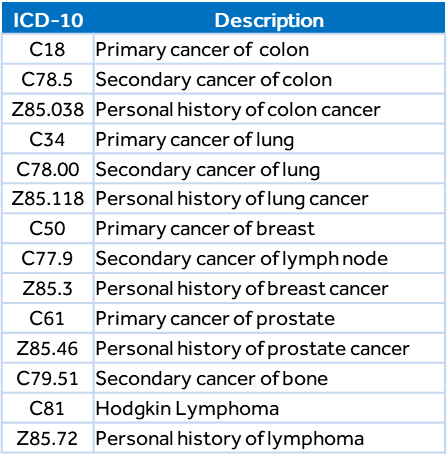
Neoplasms are classified primarily by site and then by behavior (benign, carcinoma in-situ, malignant, uncertain behavior, and unspecified).
- Benign neoplasms grow in only one place and do not spread or invade other body parts
- Malignant neoplasms are a form of cancer that can grow and have the potential to invade other body parts
To accurately code a current neoplasm, it is important to review the entire medical record for the histological type, location and laterality, and whether it is primary, secondary, or metastatic.
When a malignant neoplasm spreads and invades other body parts, this is known as metastatic cancer. The American Hospital Association (AHA) presumes the following sites as metastatic unless documented as primary:
- Bone
- Brain
- Diaphragm
- Heart
- Liver
- Lymph Nodes
- Mediastinum
- Meninges
- Peritoneum
- Pleura
- Retroperitoneum
- Spinal Cord
Documentation and coding of neoplasms has been a source of many errors in ICD-10-CM coding and reporting. The biggest issue with coding neoplasms is correctly assigning codes for “active cancer” vs. a “history of cancer.” How ICD-10-CM classifies this differs from how physicians perceive cancer and its treatment.
ICD-10-CM Official Guidelines
When a primary malignancy has been previously excised or eradicated from its site, there is no further treatment directed to that site, and there is no evidence of any existing primary malignancy at that site, a code from category Z85 — Personal history of malignant neoplasm — should be used to indicate the former site of the malignancy.
Documentation & Coding
To ensure a neoplasm is coded to the highest level of specificity, documentation should be clear and conscience, including:
- The histological type or behavior
- The location, laterality, and side
- Whether the neoplasm is primary or secondary
- Active treatment or watchful waiting
Do not describe active cancer as a “history of,” and do not describe historical cancer as “active.”
Leukemia and multiple myelomas are the only types of cancer that have ICD-10-CM codes to describe the cancer as in-remission or relapse. There are personal history codes for lymphoma and leukemia when there is no evidence of disease and the patient is considered cured.

RESOURCES: ICD-10-CM Guidelines ; AHA 1985 Q2 pg.1
About the Author


